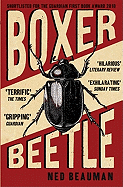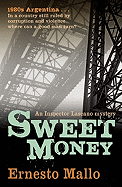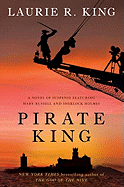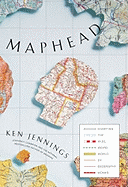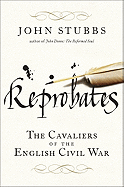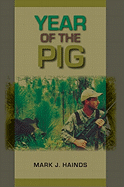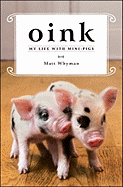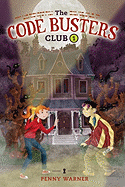 I'm watching a video of people's legs and feet as they walk back and forth through the main hall of Grand Central Station. And yes, this is preparation for writing an author interview. At Priscilla Warner's behest, I'm watching some of her "Breathtaking Moments" videos from her website--"breathtaking" as in "taking a breath," designed to offer a moment of meditative calm.
I'm watching a video of people's legs and feet as they walk back and forth through the main hall of Grand Central Station. And yes, this is preparation for writing an author interview. At Priscilla Warner's behest, I'm watching some of her "Breathtaking Moments" videos from her website--"breathtaking" as in "taking a breath," designed to offer a moment of meditative calm.
That calm can be useful in any situation, really, which is Warner's ultimate point in her new book, Learning to Breathe: My Yearlong Quest to Bring Calm to My Life (Free Press; reviewed below). She had a long and very productive career as an advertising copywriter and executive, then co-authored 2006's bestselling The Faith Club: A Muslim, A Christian, A Jew: Three Women Search for Understanding with Ranya Idilby and Suzanne Oliver, about the trio's efforts to understand each other's religious backgrounds.
Warner said her experience of touring the country after the release of The Faith Club showed her something important. "I met hundreds of thousands of people and all of them--all of them!--were going about their business, all of them were thoughtful about how they chose to put one foot in front of the other. I found it inspirational and liberating to realize that there are so many ways to get from one place to another. We're all human beings, all on a path, and we shouldn't be critical of the paths that others are taking."
Yet at the same time Warner was increasing her awareness of other people's lives, her own was in turmoil--turmoil that she'd long hidden from her children, colleagues, even her closest friends. Priscilla Warner suffered from lifelong anxiety and panic attacks that began during her teen years.
"I just didn't know what it was!" Warner said of her first panic attack, which happened nearly 40 years ago. "When you're a teenager, you think you're the only person in the world who feels the way you do." She goes on to describe her first full-blown panic attack. "I was working as a waitress in the Brown University cafeteria, and since I went to an all-girls school, I was nervous, because there were boys there. I remember the moment exactly: I was dishing out peas with one of those giant steel spoons, and I started to hyperventilate. I had everything from the tingling hands to a blocked throat to shivering all over, hot flashes--I felt like I was dying or going crazy. Everything around you is very silent when this is happening, and everything slows down, yet no one else notices anything."
Warner's panic attacks and anxiety didn't stop with college at the University of Pennsylvania, with marriage, or with the birth of their two sons (now in college themselves). "I used to drink hot tea just to distract myself from the panic," she recalled. "A slightly scalded throat was preferable to appearing panicked in front of my children. I was afraid I was defective, that I would pass this on to one of them."
Sadly, Warner had good reason to consider herself somehow different. When she was just 16 months old, she had a serious infection that led to a near-death experience. Her respiratory distress became so acute that a hospital resident performed an emergency tracheotomy.
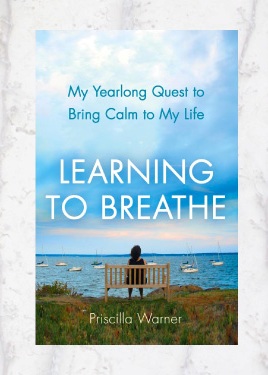 "My parents told me that story constantly when I was growing up, from start to finish: 'Then you were gasping for breath, then you were in the hospital,' and so on." Warner said she heard that story often, and it frightened her every time. "My parents were good people, but one therapist told me years later, 'Your parents didn't raise you, because they couldn't--but they let you grow up.' "
"My parents told me that story constantly when I was growing up, from start to finish: 'Then you were gasping for breath, then you were in the hospital,' and so on." Warner said she heard that story often, and it frightened her every time. "My parents were good people, but one therapist told me years later, 'Your parents didn't raise you, because they couldn't--but they let you grow up.' "
For years, Warner said, she was "functioning fine." Her anxiety allowed her to channel energy into being accomplished and productive: "I was a maniacal 'doer' who worked my butt off. One rabbi told me that a certain amount of anxiety is fine and can be productive. But panic--that's a different thing. Panic, I now say, is my teacher. Panic is what got me to sit down on my ass and meditate."
That doesn't mean Priscilla Warner "got" meditation immediately. On her first retreat, she remembers following a spiritually minded friend "like a rookie would watch Babe Ruth. She knew how to sit, that you needed a shawl for temperature changes, a notebook to jot down observations. I wanted to be perfect, and just like so much else, I needed to learn to let go in order to really learn anything about being present."
She now believes that anyone can get beyond this crippling problem. "Thich Nhat Han says 'Understand your own suffering, and you will find compassion,' " she said. Warner always worried her secret would slip out; in fact, when she first read the manuscript of Learning to Breathe, Warner's close friend Meredith Vieira wept, saying, "I had no idea you were going through this." Warner added, "I hope that when people read this book that they don't try to analyze how much I suffered or how much they suffered in relation to me. That would be missing the point."
Although Priscilla Warner has no idea what she'll do with her "new self," she hopes that her humor, which used to come from a painful place, will now come from a delightful place instead.
She laughs heartily. "You know, I couldn't find a way to channel my panic productively... so I wrote a memoir!" Warner said she likes to see herself as "a monk in a minivan" who can choose, each day, to find a few minutes and be still. "The little voice that once told me 'You're defective' now says 'You can be present. You can choose where to put your attention.' " --Bethanne Patrick
Portrait of the Artist: Priscilla Warner
 The 30th annual Banned Books Week, sponsored by the ALA, booksellers and publishers associations and others, begins tomorrow. The centerpiece of the "celebration" is the display at libraries and bookstores of banned books. The Week has also included "read-outs," at which booklovers read from their favorite banned or challenged books. This year the Week is taking read-outs into the digital era, posting videos of booklovers reading aloud or talking about their battles against book challenges. The videos, running two to three minutes, will appear on special YouTube channels. Many bookstores and libraries are taping customers and patrons and posting the videos, but booklovers anywhere can participate on their own. For more information, click here.
The 30th annual Banned Books Week, sponsored by the ALA, booksellers and publishers associations and others, begins tomorrow. The centerpiece of the "celebration" is the display at libraries and bookstores of banned books. The Week has also included "read-outs," at which booklovers read from their favorite banned or challenged books. This year the Week is taking read-outs into the digital era, posting videos of booklovers reading aloud or talking about their battles against book challenges. The videos, running two to three minutes, will appear on special YouTube channels. Many bookstores and libraries are taping customers and patrons and posting the videos, but booklovers anywhere can participate on their own. For more information, click here.


 I'm watching a video of people's legs and feet as they walk back and forth through the main hall of Grand Central Station. And yes, this is preparation for writing an author interview. At Priscilla Warner's behest, I'm watching some of her "Breathtaking Moments" videos from her
I'm watching a video of people's legs and feet as they walk back and forth through the main hall of Grand Central Station. And yes, this is preparation for writing an author interview. At Priscilla Warner's behest, I'm watching some of her "Breathtaking Moments" videos from her  "My parents told me that story constantly when I was growing up, from start to finish: 'Then you were gasping for breath, then you were in the hospital,' and so on." Warner said she heard that story often, and it frightened her every time. "My parents were good people, but one therapist told me years later, 'Your parents didn't raise you, because they couldn't--but they let you grow up.' "
"My parents told me that story constantly when I was growing up, from start to finish: 'Then you were gasping for breath, then you were in the hospital,' and so on." Warner said she heard that story often, and it frightened her every time. "My parents were good people, but one therapist told me years later, 'Your parents didn't raise you, because they couldn't--but they let you grow up.' " Sidelines space exploration. Moleskine's limited edition line of products dedicated to Star Wars is showcased in the promotional video
Sidelines space exploration. Moleskine's limited edition line of products dedicated to Star Wars is showcased in the promotional video  Across Many Mountains: A Tibetan Family's Epic Journey from Oppression to Freedom
Across Many Mountains: A Tibetan Family's Epic Journey from Oppression to Freedom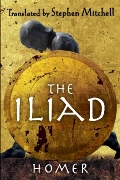 The Iliad by Homer is the first Western epic (there are earlier literary examples, like Gilgamesh, but those are considered Eastern). Most students at least know that the Greek poet's great work is the story of a hero named Achilles during the Trojan War. Stephen Mitchell's new translation (due out from Free Press October 11, 2011) is, according to one blurb, "overtly virile" and according to another, "an Iliad for this generation."
The Iliad by Homer is the first Western epic (there are earlier literary examples, like Gilgamesh, but those are considered Eastern). Most students at least know that the Greek poet's great work is the story of a hero named Achilles during the Trojan War. Stephen Mitchell's new translation (due out from Free Press October 11, 2011) is, according to one blurb, "overtly virile" and according to another, "an Iliad for this generation." The more recent past is the territory for The Ice Road: An Epic Journey from the Stalinist Labor Camps to Freedom by Stefan Waydenfeld. The teenaged Waydenfeld and his parents, a physician and a medical bacteriologist, found themselves consigned as displaced Poles to a Soviet labor camp called Kvasha, in Siberia. Their journey to freedom involved suffering--but also serendipity at turns.
The more recent past is the territory for The Ice Road: An Epic Journey from the Stalinist Labor Camps to Freedom by Stefan Waydenfeld. The teenaged Waydenfeld and his parents, a physician and a medical bacteriologist, found themselves consigned as displaced Poles to a Soviet labor camp called Kvasha, in Siberia. Their journey to freedom involved suffering--but also serendipity at turns.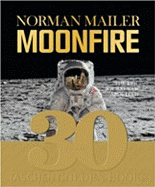 Norman Mailer's Moonfire: The Epic Journey of Apollo 11 came out 30 years ago, and is now available in a sumptuous new edition from Taschen. However, no matter which form readers find it in, this epic is slightly different--it's not about saving a family or a nation from extinction, but about keeping a group of explorers safe as they went into wholly uncharted territory far from the earth's surface. --
Norman Mailer's Moonfire: The Epic Journey of Apollo 11 came out 30 years ago, and is now available in a sumptuous new edition from Taschen. However, no matter which form readers find it in, this epic is slightly different--it's not about saving a family or a nation from extinction, but about keeping a group of explorers safe as they went into wholly uncharted territory far from the earth's surface. --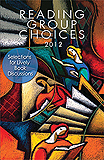 Charlie Mead, publisher and owner of Reading Group Choices, said that the guide is being released now because "the majority of book clubs make their reading selections for the year in September, apropos of the start of the school year, National Book Month (September), National Reading Group Month (October), and the need to plan ahead for the coming year."
Charlie Mead, publisher and owner of Reading Group Choices, said that the guide is being released now because "the majority of book clubs make their reading selections for the year in September, apropos of the start of the school year, National Book Month (September), National Reading Group Month (October), and the need to plan ahead for the coming year."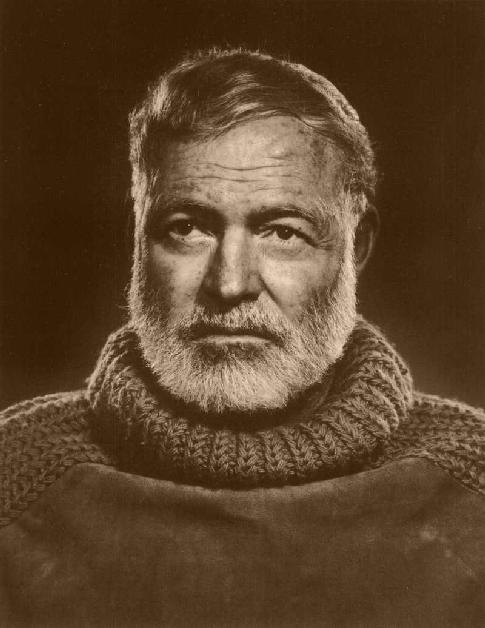 In celebration of the publication this week of The Letters of Ernest Hemingway, Volume 1, Cambridge University Press has put together
In celebration of the publication this week of The Letters of Ernest Hemingway, Volume 1, Cambridge University Press has put together 
 Ross Macdonald is a typographer and editorial illustrator who moonlights as a creator of very special props for movies and television.
Ross Macdonald is a typographer and editorial illustrator who moonlights as a creator of very special props for movies and television. 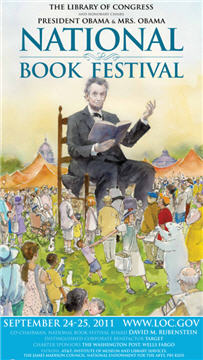 The Library of Congress is hosting the 11th annual National Book Festival on the Mall in Washington, D.C. this weekend. The fair, which is free and has been expanded to two days from one, takes place Saturday, 10 a.m.-5:30 p.m., and Sunday, 1-5:30 p.m. More than 100 authors, poets and illustrators will give readings and be available for book signings; they include Julianne Moore, Amy Chua, Jim Lehrer, Sarah Vowell, Sherman Alexie, Laura Lippman and David McCullough.
The Library of Congress is hosting the 11th annual National Book Festival on the Mall in Washington, D.C. this weekend. The fair, which is free and has been expanded to two days from one, takes place Saturday, 10 a.m.-5:30 p.m., and Sunday, 1-5:30 p.m. More than 100 authors, poets and illustrators will give readings and be available for book signings; they include Julianne Moore, Amy Chua, Jim Lehrer, Sarah Vowell, Sherman Alexie, Laura Lippman and David McCullough. 
